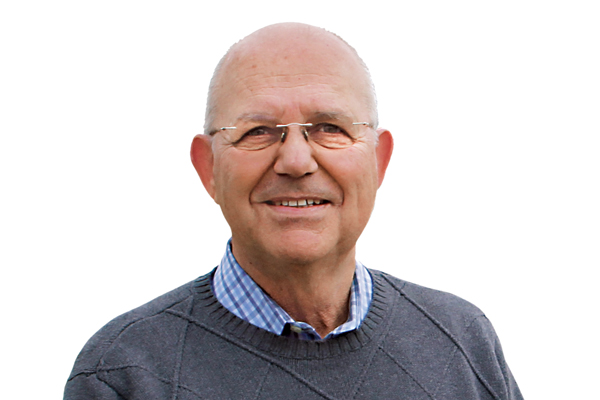Off the Record: TDR’s evolution from the lab to the course

Mike Kenna, Ph. D.
Using time domain reflectometry (TDR), soil moisture measurements have come a long way in the last 40 years. As the research article suggests this month, these measurements have made a significant economic impact and helped with water management on golf courses.
The TDR is a complex tool but operates on a simple concept. A superintendent inserts two metal probes (or waveguides) into the ground, and an electric pulse travels down the metal probes. When the pulse reaches the end of the probe, the electric pulse reflects. Higher moisture levels will increase the intensity of the pulse in the probe. The user calculates the average moisture by comparing the measured reflection to the initial pulse.
A look at the past
In 1986, Robert Carrow, Ph.D., at the University of Georgia, conducted a United States Golf Association (USGA)-sponsored study, “Influence of Soil Moisture Level on Turfgrass Water Use and Growth.” His research used moisture sensing probes installed at three soil depths. His TDR unit did not work correctly in the first year of the study, but it performed great in 1987 and 1988.
Carrow later penned an article titled “Irrigation Scheduling Technology: The Old and New” in the May 1987 issue of Golf Course Management. A photo of a TDR with the caption, “One device that may be of increasing value to future management is a time domain reflectometer,” leads the article.
For the next 20 years, TDR soil moisture meters served primarily as a helpful research tool. A few TDR products were on the market, but most were too expensive or unable to hold up to daily usage on the course.
TDRs in the 21st century
In late summer 2007, Greg Bell, Ph.D., Oklahoma State University, called me and said a fellow from Spectrum would demonstrate the company’s new TDR. Mike Thurow, president of Spectrum Technologies, did the demonstration. He used the first version of the Spectrum TDR that looked like a small pogo stick.
Thurow started to take measurements on a bentgrass research putting green about every three paces. He could also download the readings and, using the cloud, provide a map of soil moisture on the putting green.
It was about this time that the USGA developed the TruFirm to measure putting green firmness. We wanted to find better water management practices to firm up greens for championships and daily play. Thurow came to the 2008 Golf Industry Show in Orlando, Fla., and we demonstrated the Field Scout and the USGA TruFirm.
Pat Gross, an agronomist with the USGA, used the Field Scout at the 2008 U.S. Open at Torrey Pines in San Diego. There was not a very good correlation between TDR moisture and TruFirm measurements.
The 3-inch probes on the TDR could not accurately account for moisture in the upper half-inch of the putting green. However, Gross used the tool to help the maintenance staff water more accurately. While staff made passes hand-watering the greens, he recorded the change in moisture, which helped manage the firmness better.
At the Green Section staff meeting in fall 2008, we agreed to use research funds to purchase the Field Scout 300 for 15 agronomists. I use a PowerPoint from 2009 to this day to tell the TDR story from the 1980s to the 2008 U.S. Open.
Soil moisture meters today
There are several soil moisture sensors on the market, such as the POGO, Toro Turfguard and Spiio, to name a few. An improvement in these devices is that they also measure soil salinity which affects the soil moisture readings.
Soil moisture meters were one of the categories measured for the economic impact of USGA-supported research. The adoption and economic impact of soil moisture sensing have been impressive and an excellent testament to technology moving from the laboratory to the field that helps improve resource management!








